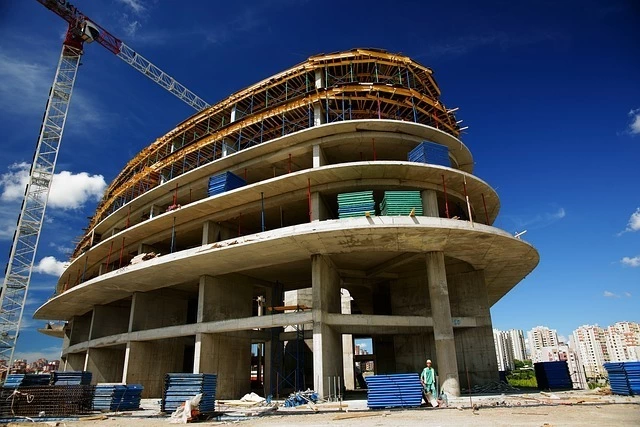The structural design basis starts with the type of structure to be designed. For any structural design to commence, we require certain data.
These data include information about the type of structure, site conditions, loading conditions, type of environmental exposure, earthquake zone, and wind zone.

Site Conditions:
The structural design of the foundation requires soil geotechnical (soil) investigation data, i.e., the soil’s safe bearing capacity and the water depth below the ground.
Also Read: Difference Between Architect and Civil Engineer
Loads on the structures:
- Dead Loads: Dead Loads are loads from the self-weight of the structural members such as beams, columns, slabs, walls, finishing, plastering, etc. Any stationary elements or equipment that may be permanently positioned on the structure shall also be considered a dead load. Dead loads are also called self-weight and are calculated as volume multiplied by their unit weight. Units of different materials are provided by the standard codes.
- Live Loads: Live loads, also called imposed loads, are probable loads that the structure may be subjected to during occupancy. These are loads that are moving or dynamic and may or may not be present on the structure during the intended use of the structure. For example, for an industrial structure, loads from people, maintenance tools, etc., can be called live loads, while loads from equipment that are stationary at a location are considered dead loads. For the design of any structure, live loads should be considered based on future expansion plans, and all the probabilities of loads that the structure may experience during its lifetime should be considered.
- Wind Loads: Wind loads are horizontal loads on the building that are exerted on the surface area of the building on the windward side. This load is calculated based on the wind zone, which provides the maximum wind speed in the given zone. This can be obtained from the wind map of the location. This wind speed is converted into force based on the surface area and orientation of the building w.r.t. wind direction. The shape of the building or structural member is also considered for calculation. Wind loads are considered only on those structural members that are exposed to the wind or that resist the wind. The guidelines for calculation of wind force on the structure are provided by ASCE 7-95 / UBC -1997 /IS 875: 1987 (Part 3) / BS CP3: Chapter V: Part 2: 1972 or whichever applicable codes shall be considered based on the location of the building or structure.
- Seismic / Earthquake loads: Design for seismic loads shall be carried out as per ASCE 7/ UBC/ IS 1893 or whichever standard code is applicable. The guidelines provided by these applicable codes shall be followed for the calculation of earthquake forces.
Also Read: Structural Engineer | All You Need To Know
Design of Structures:
The structural design of buildings or other structures should be carried out by a Structural Engineer as per the relevant code of practice.
The structural concrete design shall conform to ACI 318-95 / IS 456: 2000 / BS 8110: Part 1: 1985 or another applicable code.
Structural steel design and fabrication shall conform to AISC-ASD (9th Edition) / IS 800:1984 / BS 5950: Part 1:1990.
Structural design methods are selected based on local practices. Working stress method, Limit State Method, and Load Resistance Factor Design method.
These are the methods used for the design of structural members and are guided by the relevant standard code of practice.
The following factors are to be considered for the design of buildings or other structures and shall conform to the standard codes:
- Maximum allowable settlement of foundation/structure.
- Vertical and lateral deflections of buildings, structures as a whole, and other structural members.
- Sliding and overturning of buildings or structures should be checked and prevented by design.
- Standard detailing guidelines should be followed in the drawing.
- All engineering and design shall comply with relevant and applicable codes of practices, local byelaws, and rules as per the directorate of industries and factories as listed in the Project Design Basis.
- Environmental exposure conditions should be considered in the design and respective factors must be applied in structural member design.
- Types of construction materials and structural members and their properties should be used during design.
- Special care should be taken to provide an easy escape for occupants during emergencies such as fire.
These are only a few points, many other factors should also be considered that may be relevant to the design.
A checklist for different types of structural design should be maintained and followed to prevent any errors during the design and detailing of buildings and other structures.
Also Read: What is the Function of Buildings?
We hope this article helped you learn about Structural Design Basis | General Guidelines. You may also want to learn about What is Civil Engineering? | History and Functions, Engineering Disciplines, Brick Masonry | Advantages, and Disadvantages, and Structural Engineers.
If you liked this article, please Join WebsiteForEngineers on Telegram, and you can also find us on Pinterest, Twitter, and Facebook.


